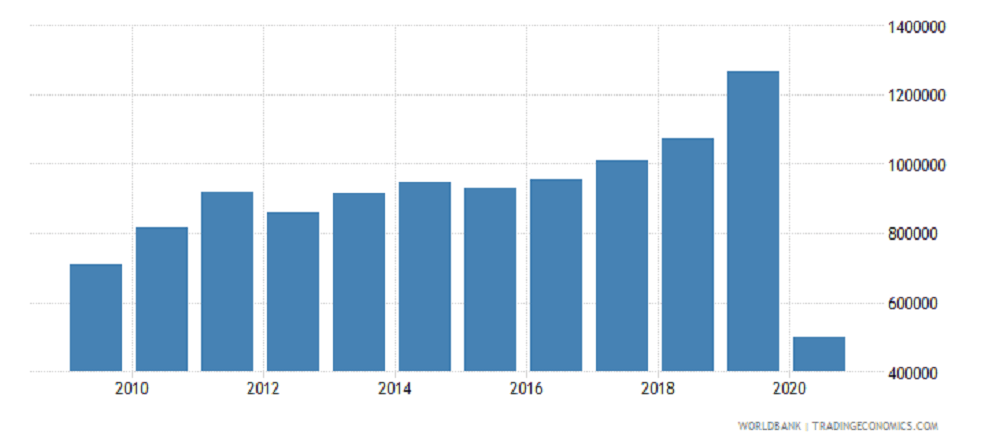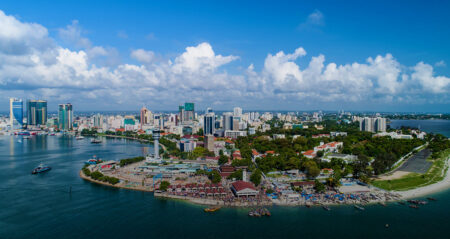The tourism industry offers many opportunities to invest in Africa’s rich local communities, generate economic activity, and create employment opportunities for women and young people.
Africa’s unique history and natural wonders are gaining attention amid the local and global increase in cultural, heritage and development tourism. Several African countries present tremendous promise to become or remain vibrant hosts for tourists, investors, and entrepreneurs, which can drive employment for low-skilled workers and economic inclusion for women and youth. (Ambien)
As far as March 5, 2019, Brookings suggested that policymakers improve governance with a better-coordinated effort across agencies to simplify the regulation, remove the barriers to tourism development, attract investors, and promote tourist destinations.
- The Zambia Tourism Authority (ZTA) announced that there would be no VISA requirements for the United Kingdom, United States of America, Canada, Norway, Australia, China, South Korea, Gulf Estates and the European Union.
- In 2019, Zambia approved its Tourism Master Plan 2018 to 2038, a 20-year practical development strategy to enhance the economic contribution of the tourism sector to the southern African nation’s economy.
- Tourism is the country’s fastest-growing economic sector, contributing US$1.8 billion last year.
Furthermore, policymakers were also advised to unlock the competitiveness and ease of doing business in the tourism sector with the development of infrastructure, including for road, air, and water transport, as well as the simplification of visa requirements and administrative processes.
Three years down the line, Zambia has removed visa requirements for the European Union, China, and the United States of America, among other lucrative global tourism markets, in a bid to revive the tourism sector negatively impacted by the COVID-19 pandemic. Zambia already has a no-visa policy for most African countries.
Read: Portugal opens borders relaxing visa rules for Lusophone countries
The sector’s performance was seriously affected by travel restrictions necessitated by the advent of the COVID-19 pandemic in 2020, which resulted in significant job losses.
In a notice on Sunday, the Zambia Tourism Authority (ZTA) announced that there would be no VISA requirements for the United Kingdom, United States of America, Canada, Norway, Australia, China, South Korea, Gulf Estates and the European Union. This is with effect from October 1, 2022.
The Zambia Tourism Agency (formerly Zambia Tourism Board) was established in 2015 to market and promote Zambia as a travel destination of choice and to regulate the tourism industry.
Zambia is home to the world-famous Victoria Falls, vast wildlife resources, varied scenery, wilderness, diverse culture and national heritage, adventure activities and more.
The developments come on the back of the country’s approval of its Tourism Master Plan 2018 to 2038, a 20-year practical development strategy to enhance the economic contribution of the tourism sector to the southern African nation’s economy.
“Currently the fastest-growing economic sector in the country – contributing US$1.8 billion last year. The vision is for Zambia to rank among the most-visited holiday destinations in Africa,” the country’s tourism sector market information said.

In 2018, Zambia received a total of 1,072,012 international tourist arrivals (a 6.2 per cent increase on 2017), and in 2019 1.2 million arrivals were recorded. Growth in this sector slowed down in the second quarter of 2021 to 3.4 per cent from 4.8 per cent recorded in the first quarter of 2021.
In the 2020 national budget, the government announced improved funding to support the Northern Circuit, a region that has myriad tourism offerings consisting of waterfalls, national parks and other heritage sites as well as the rich traditional ceremonies that occur annually.
The country’s President Hakainde Hichelema said in a recent Budget speech that Zambia was focused on increasing the number of foreign visitors to the country. “Tourism is huge business, yet we have not marketed Zambia well in the past.”
Read: Zambia: President Hakainde Hichilema sets perfect example for economic recovery in Africa
Zambia has also leveraged international agents to market the country. Further, the country has continued utilising the missions abroad to market the destination aggressively. Zambia also participates at selected international exhibitions such as ITB Berlin, FITUR in Madrid and Vankantibuers in the Netherlands, to mention a few.
According to Tourism Update, when driving African travel and tourism it is important that the aviation industry sits at the table.
The Zambian government is working hard toward providing an investor-friendly environment and improving accessibility to the country. This has included the re-introduction of a national carrier and visa reforms.
According to founder and director of Zambian Ground Handlers, Nick Aslin, massive investment in international airports in Zambia can already be seen with a brand-new building in Livingstone and Lusaka due to open year-end.
“The tourism product is a lot more sophisticated and professional in terms of quality of service and product and this, in turn, has opened it up to a greater variety of travellers,” he said.
Zambia has memorable touristic products with sustainable competitive advantages and a quality that meets or exceeds global standards.
The jaw-dropping Victoria Falls; the Devil’s Pool, an adrenaline-packed swim by the lip of the Victoria Falls, is only accessible on the Zambian side, as is Livingstone Island, where David Livingstone first viewed the falls. Lake Tanganyika in Northern Zambia is the world’s longest freshwater lake and the largest and deepest in Africa.
The country has some unique landmarks, including the gorge swing in Livingstone, the Cathedral of the Holy Cross in Lusaka, Mwela Rocks in Kasama, Mukuni village in Livingstone and The Moto Moto museum and WWI graves in Mbala, to name but a few.
According to Outlook Travel, Zambia has unrivalled wildlife offerings. The world’s biggest mammal migration takes place in Zambia at the Kasanka National Park, when more than 10 million fruit-eating bats converge from October to December annually; the wildebeest migration in Liuwa National Park also attracts tourists. The Thornicroft giraffe can only be found in Zambia in South Luangwa National Park.
You may visit Zambia for the safari opportunities it offers, but a guarantee is that you’ll also be captivated by its cultural offerings. Zambia has 72 different ethnic groups (many speaking the Bantu language), each with its own culture and customs. Many of these groups celebrate their cultural heritage by hosting traditional festivals; Ku-omboka, one of the most well-known, celebrates the end of the rainy season.
Lastly, Zambia is a beacon of peace and a shining example within Africa of a country that has never been to war and continues living in harmony.











